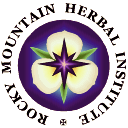
|
— updated 2023-03-01

 |
|
— updated 2023-03-01
|
Herbalists' BootCamp
|
|
Subtopics on this page… Tutorial #6-supplement(HSL): The HSL color-space model explainedHSL (Hue-Saturation-Lightness) is a popular representation of the RBG (Red-Blue-Green) color model, designed in the 1970s by computer graphics researchers to more closely align with the way human vision perceives color-making attributes. In this model, colors of each hue are arranged in a radial slice around a central axis of neutral colors which ranges from black at the bottom to white at the top. The HSL model places fully saturated colors around a circle at a lightness (L) value of 50%, where L=0% is fully black and L=100% is fully white. The 3-dimensional cylindrical color space of HSL is illustrated below:
HueWith 360 degrees in a circle, 360° is the same as 0°, which corresponds to the color-hue red (H=0°). Blue corresponds to a hue value of H=240°, and green corresponds to H=120°. Fully saturated (S=100%) hues lie at the outer perimeter of the disk, and at the very center all the hues converge to the same value of gray (S=0%). SaturationSaturation is best thought of as the intensity of a color, or the extent to which it differs from no color-hue (black-gray-white). If a color has a saturation value of S=0%, its hue value is irrelevant (it has no hue), and it falls somewhere on the range from pure black to gray to pure white.
For the hue red (H=0°) at a lightness value of L=50%, the full range of possible saturation values is displayed below:
LightnessLightness values range from 0% (pure black) to 100% (pure white). The following table illustrates the color-hue red (H=0°), fully saturated (S=100%), with a range of lightness values from 0% to 100%. For the endpoint values of L=0% and L=100%, the hue value is irrelevant.
The importance of good lighting conditionsIt is very important that you have optimal lighting conditions when attempting to judge a client's tongue tissue and coating color. Looking at your own tongue in a bathroom mirror is totally inadequate, because the lighting is often poor, and mirrors typically reflect only a fraction of the incident light, severely degrading the vividness and brightness of the true colors. Most typical indoor lighting conditions are also inadequate for properly viewing tongues. The best lighting conditions can be attained by viewing a client's tongue outdoors on a sunny day in indirect sunlight — for example, under a shade tree. The tongue itself should not be in direct sunlight, but in shade. Alternatively, viewing the tongue indoors near a bright sunny window may work OK. If you plan to do this a lot, a high quality quartz-halogen lamp (anywhere between 100 and 200 watt), available for under $20 or so at many hardware stores, is an acceptable option. I like wall-mounted quartz-halogen lamps because they provide a relatively inexpensive way to approximate the color spectrum of natural sunlight. A good lamp will often reveal subtle features like tiny spots and subtle features within the sublingual veins that are otherwise invisible. Always remember to warn your client to close his/her eyes before turning on a high-intensity lamp. I also use a flashlight with an intense beam to help me peer into the very back of the tongue and throat. References
Go back to Tutorial #6: CaseQuery
| |||||||||||||||||||||||||||||||||||||||||||||||||||||||||||||||||||||||||||||||||||||||||||||||||||||||||